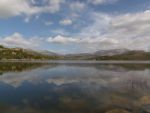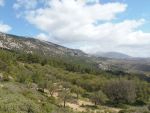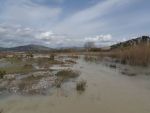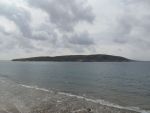|
GR171 Central Rodos and the areas of Lindos, Mesanagros and Katavia-Prassonisi
 |
 |
Criteria: B2, B3, C6
Coordinates:
36o 10' N
27o 55' E
()
|
Altitude: 0-1219 m
Area: 50000 ha
|
|
 |
 |
Images
Site Description
The majority of the area is a mixture of conifer forest and maquis, and phrygana scrub.
 |
 |
Habitats: Artificial landscapes (20%, Arable land; Perennial crops, orchards and groves; Ruderal land), Coastline/rocky areas (20%, Inland cliffs; Sea cliffs and rocky shores), Forest (15%, Native coniferous woodland), Grassland (5%, Steppes and dry calcareous grassland), Shrubland (40%, Sclerophyllous scrub, garrigue and maquis), Wetland (5%, Rivers and streams)
Land use: agriculture (90%), military, not utilised (10%), tourism/recreation (10%), urban/industrial/transport (5%)
|
 |
 |
Protection status
National Partial International Partial
Part of IBA covered by Wildlife Refuge (Kissos- Gina/Lindou Rodou, 370ha). Part of IBA covered by Wildlife Refuge (Tsabika- Faliraki- Pr. Ilias- Psalidi/Archagelou- Afan, 2,936ha). Part of IBA covered by Wildlife Refuge (Vounokalathou/Laermon- Lardou- Kalathou Rodou, 3,400ha). Part of IBA covered by Biogenetic Reserve.
Birds
This is an important area for species associated with Mediterranean scrub. Species of global conservation concern that do not meet IBA criteria: Falco naumanni (breeding).
| Species | Season | Year | Min | Max | Acc | Criteria |
|---|
| Otus scops Common Scops-owl | resident | 1995 | Common | unknown | B2
|
| Athene noctua Little Owl | resident | 1995 | Common | unknown | B2
|
| Buteo rufinus Long-legged Buzzard | resident | 1997 | 15 | 25 | poor | B2, C6
|
| Falco biarmicus Lanner Falcon | resident | 1996 | 1 | 3 | poor | B2, C6
|
| Emberiza caesia Cretzschmar's Bunting | breeding | 1997 | Frequent | unknown | B3, C6
|
|
Conservation issues
The main threats are from fire, hunting, development for tourism, and infrastructure development. Part of the area is a candidate SAC.
 |
 |
Threats:
abandonment/reduction of land management (unknown), burning of vegetation (high), construction/impact of dyke/dam/barrage (medium), forest grazing (medium), industrialization/urbanization (low), infrastructure (high), recreation/tourism (high), unsustainable exploitation (high)
|
 |
 |
Source:
Copyright © Hellenic Ornithological Society
|
|

Do you know the area?
Send us your comments at iba@ornithologiki.gr
If you have noticed serious damage to the area and you want to report it please click here
 
|









